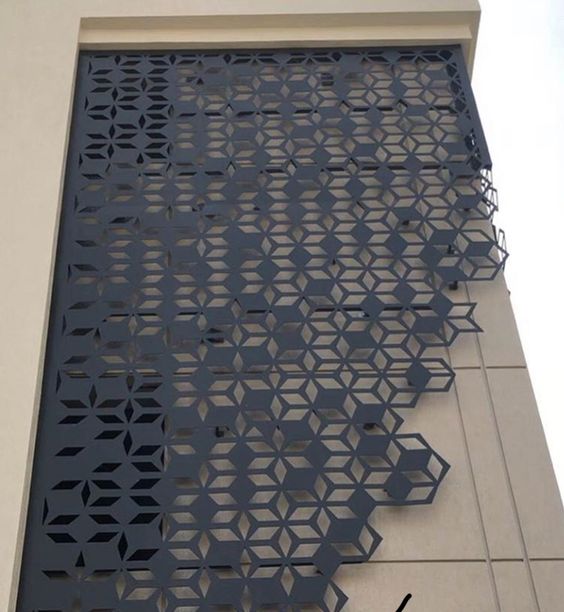#14532. Perforated Facade Screen with Geometric Honeycomb Pattern

This image showcases a sophisticated architectural element - a perforated metal panel with a geometric pattern installed on a building facade. The panel is executed in a dark color, presumably metal, and creates a dynamic transition between open space and the wall. Particular attention is drawn to the hexagonal pattern, which forms a honeycomb structure with a smooth density gradient - from a completely open edge to a filled area.
This technique is an example of modern facade design that combines functionality with aesthetics. Perforated panels not only create visual interest but can also serve to filter light, provide partial shade or ventilation, while maintaining the privacy of the space. The contrast between the geometric precision of the pattern and the asymmetric edge of the panel gives the facade dynamism and contemporary character.
This architectural approach can be adapted for private housing, using perforated elements for terraces, canopies, parapets, or decorative screens. This will create an interplay of light and shadow, provide partial privacy without completely blocking the view, and add individual character to the facade. This example illustrates how a functional element can become an expressive part of the overall architectural composition.